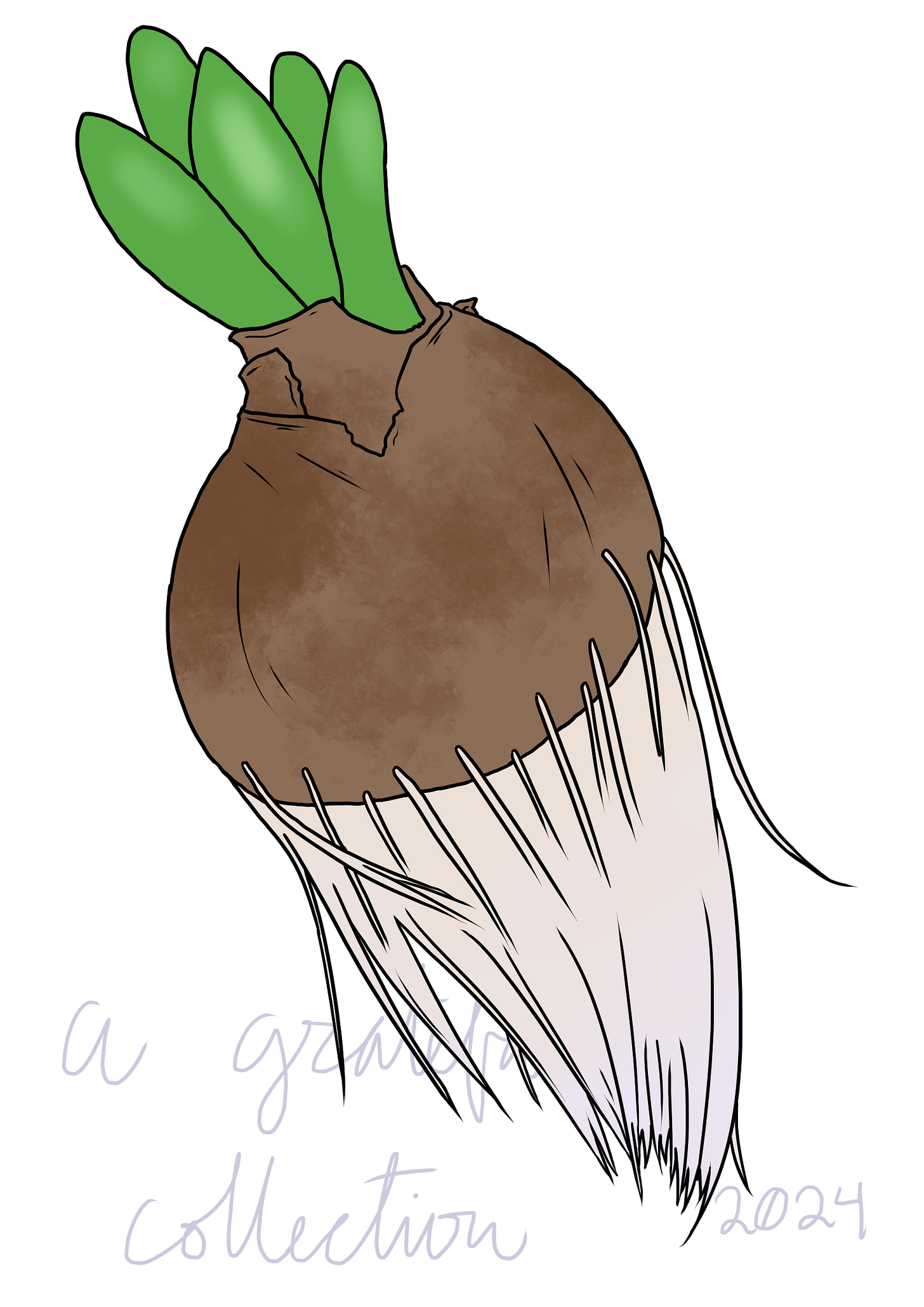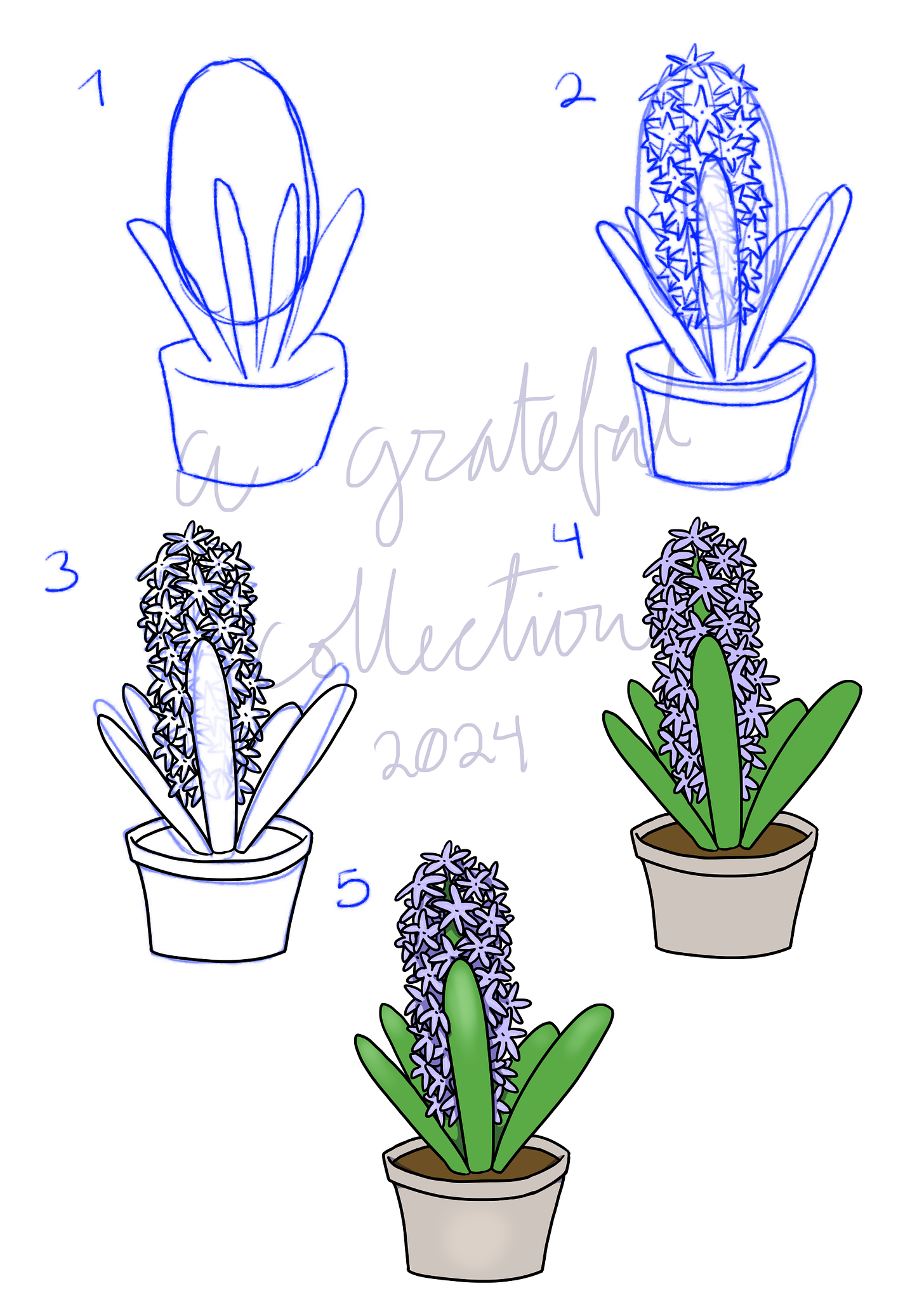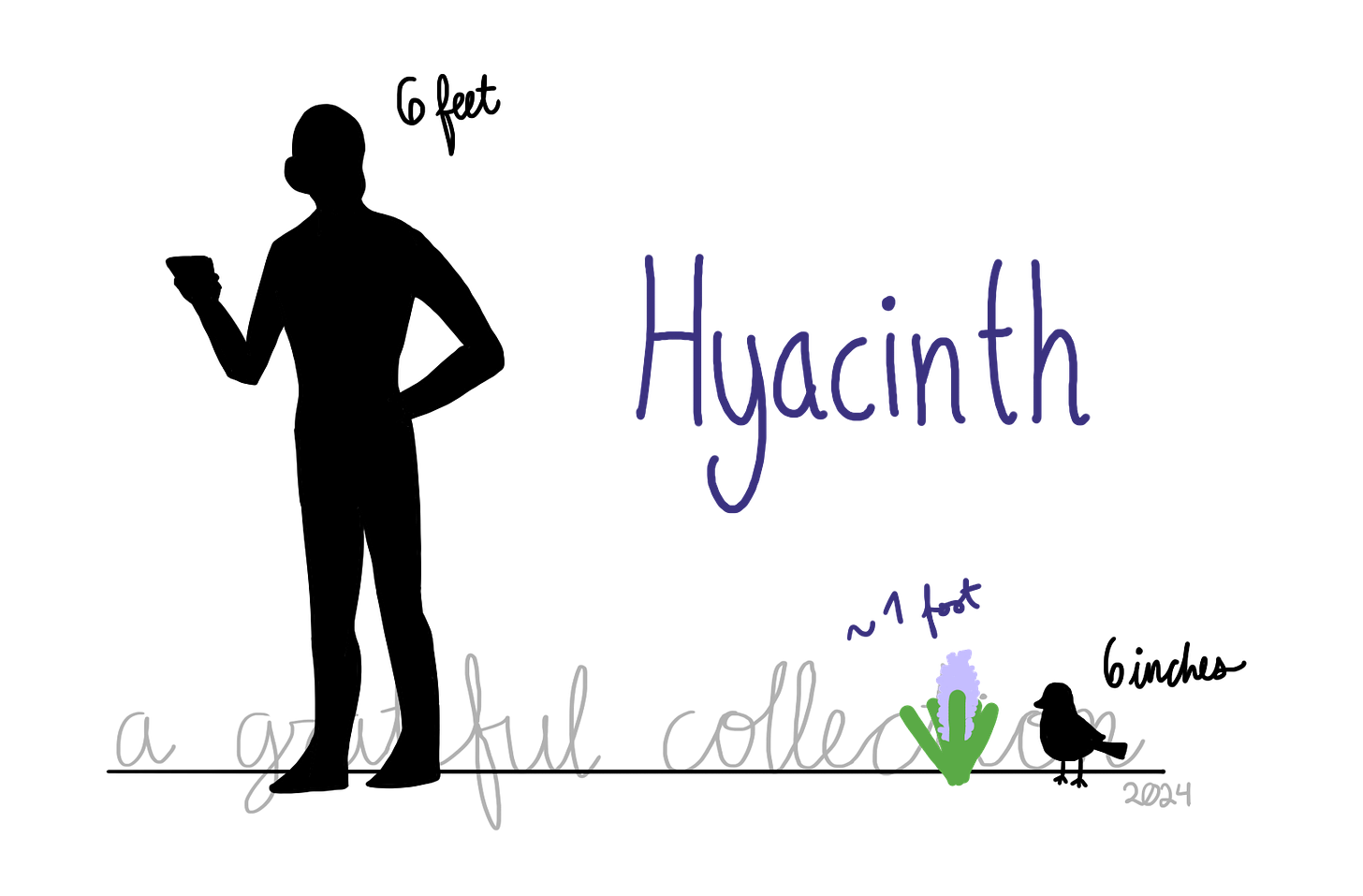March 2024: Hyacinths
I’ve always wondered how these elaborate clusters of blossoms are put together!
Now, I finally understand, somewhat, as my close friends prompted me to give drawing this plant a try for this month. They are very hard to draw!
Scientific Name and Classification
It unnerved me greatly to find that Hyacinthus is a genus in the asparagus family (Asparagaceae). It makes sense, I guess, upon assessing their visual features, but it still feels wrong on some level.
There are several other species of flower whose common name includes “hyacinth,” including the grape hyacinth (Muscari).1
To further confuse matters, the original Greek plant was probably what we today call the larkspur (Delphinium, one of the members of our friends Ranunculaceae).
Interesting Visual Features
Hyacinths have clusters of blossoms, and are typically a lovely blue-purple (though they’ve been bred for pink, white, red, and yellow).
They’re rather low to the ground, only about a foot tall at most.
Cool Properties
In addition to being in the asparagus family, hyacinths are also mildly toxic! The bulb contains oxalic acid, which is a mild skin irritant. This substance is probably why deer and rabbits don’t eat hyacinths.2

The hyacinth is also regarded as a symbol of prudence and the desire for heaven in Catholic tradition.3
Growing Conditions
Hyacinths like plenty of sun and are fairly low maintenance. They like well-draining soil and to be planted 4-6 inches deep and about that far apart. They are perennials (plant once and they’ll come back every year until they die), so don’t plant them unless you really like them! They like to bloom once a year in early spring when it’s still a bit chilly out, making them some of the earliest color in a garden. They’re happiest in USDA Zones 4-8.4
Hyacinths reproduce both by seed and by creating little “bulblets” on the outside of their bulbs, so every few years you can dig them up, pluck off any good-sized bulblets, and then replant.
One Odd Fact
I scoured a few academic databases and really couldn’t find anything neat about Hyacinthaceae.
Water hyacinths (Eichhornia crassipes), however, are having a moment in scientific literature due to their invasive nature in waterways in the Indian subcontinent and South Asia. Some researchers in Tamil Nadu, India have decided to make lemonade with their invasive plant species--or rather, to try to make ethanol with the biomass.5
This is supposedly related to the myth of Hyacinthus, upon whose death Apollo made the flower to remind himself of his dead love. While the Catholic tradition did borrow very heavily from the Greeks, I’m not sure how they got these particular meanings from a very gay origin story.
Southern Living and Better Homes and Gardens again, but this time including The Spruce.
I learned about this from:
Vijayalakshmi, A. et al. (2023) ‘BIOETHANOL PRODUCTION FROM AQUATIC WEED WATER HYACINTH (Eichhornia crassipes) THROUGH ENZYME HYDROLYSIS AND FERMENTATION METHOD’, Oxidation Communications, 46(4), pp. 994–1001.
I can’t get a permalink to that paper, but similar research was conducted in 2015:
Manivannan, A., Narendhirakannan, R.T. Bioethanol Production From Aquatic Weed Water Hyacinth (Eichhornia crassipes) by Yeast Fermentation. Waste Biomass Valor 6, 209–216 (2015). https://doi.org/10.1007/s12649-015-9347-6




